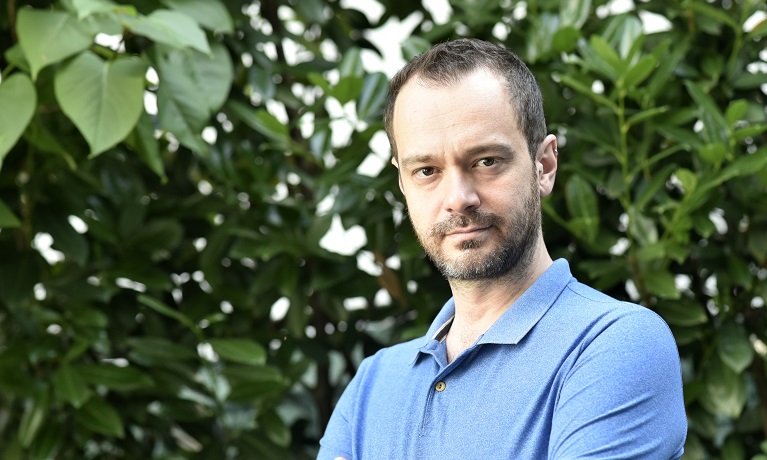Search
Coventry University researcher shows how time crystals could be used to make quantum batteries

Associate Professor Federico Carollo
Thursday 06 February 2025
Press contact
Time crystals may sound like something from a science fiction film but a researcher at Coventry University is showing how they could contribute to the future of energy storage.
In a regular crystal, like a diamond, the atoms are arranged in a repeating pattern. In a time crystal, a pattern repeats at regular intervals over time. Since it constitutes a robust phase of matter with unique properties, there is thought to be huge potential for application in future technologies.
Federico Carollo, Associate Professor at the Research Centre for Fluid and Complex Systems of Coventry University, has been investigating how these time crystals can be used in quantum batteries.
Such batteries have the potential to be significantly more efficient and powerful than those we are traditionally familiar with and Federico’s research into time crystals had some important findings in terms of how time crystals could be used in such applications.
A time crystal is a phase of matter in which the system periodically repeats itself in time rather than in space.
Federico Carollo, Associate Professor at the Research Centre for Fluid and Complex Systems
The types of crystals that people are more familiar with are solid structures such as diamond, table salt or quartz. These all contain a series of patterns that are regularly repeated within the atoms of the crystal structure. Time crystals are different. They show repeated patterns as well but these repetitions happen consecutively over time. In a time crystal, the system does not approach a stationary state but keeps on oscillating forever.
Federico and his colleagues have been studying the thermodynamic properties of time crystals to understand how these systems can be achieved and maintained.
Although they’re still mostly studied with theoretical and mathematical models, time crystals can also be produced in laboratory experiments. They have potential applications such as quantum engines, quantum sensors or quantum batteries.
But to understand how this can be achieved, researchers first need to know more about the thermodynamics of time crystals – the way that energy flows in these systems.
It is important to quantify the resources that are needed to exploit this technology and its efficiency. Thermodynamics helps us understand the energy needed to sustain the phase, or the heat that's dissipated.
Associate Professor Federico Carollo
That type of information will make it clear whether the practical applications of time crystals are really achievable and efficient.
When time crystals were first proposed by Nobel Laureate Frank Wilczek in 2012, he assumed that these crystals, like other phases of matter, would exist in an equilibrium state. However, physicists have since learned that the only way to achieve time crystals is if they are not in equilibrium.
Federico’s team explored the thermodynamics of time crystals’ non-equilibrium state. Initially they set out to describe how coupled time crystals could be used for a quantum engine but they quickly realised their model was more appropriate to describe quantum-battery applications.
The researchers worked with a model in which two systems are coupled. They discovered that these coupled systems can work as a quantum battery more efficiently and can store more energy when in the time crystal phase rather than in the stationary one.
That knowledge can help researchers who are working on the development of quantum batteries.
Quantum batteries could be used, for instance, to channel energy into nanoscale devices. They hold the promise to perform better than classical batteries.
The hope is that we can make the next step by talking to industry, and with theoreticians and experimentalists. Together we can try to understand the future challenges to exploit time crystals in technology and to bring this outside of physics laboratories.
Associate Professor Federico Carollo
Federico led a team of researchers on the project including Paulo J. Paulino, Igor Lesanovsky and Albert Cabot from the University of Tübingen, Gabriele De Chiara from Queen's University Belfast and Mauro Antezza from the Université de Montpellier.
This research was recently featured in an article in New Scientist and Federico hopes this is a step towards getting more feedback from the broader community.
We had already received some nice feedback from the academic community, but this was an opportunity to go beyond that. It’s easy to get lost in the work but this shows that people care.
Associate Professor Federico Carollo
Find out more about the Research Centre for Fluid and Complex Systems.
--
Credit: Eva Amsen, Science Communicator and Writer: https://evaamsen.com/




